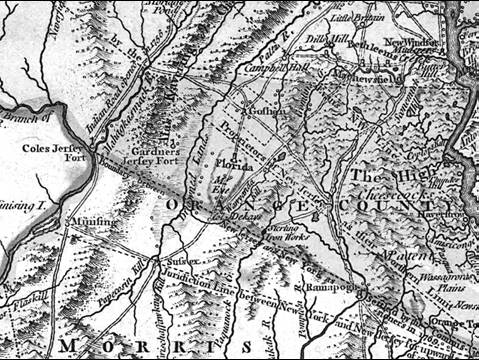Colonial era:
government, culture, preludes to war
Primary Document: Colonial Era
Map
(This map was drawn in 1776 from prior surveys)
(This map was drawn in 1776 from prior surveys)
1.
Topography determines roads.
2. Roads lead to settlement.
3.
As settlement continues and resources are exploited, disputes arise.
New
Jersey and New York disagreed
about the boundary until
1769.
Richard
Gardner worked for the New
Jersey claim and tried to enforce
that claim with local landowners,
and much of Warwick was
considered to be in New
Jersey.
The
dispute was settled in 1769 by
the famous
